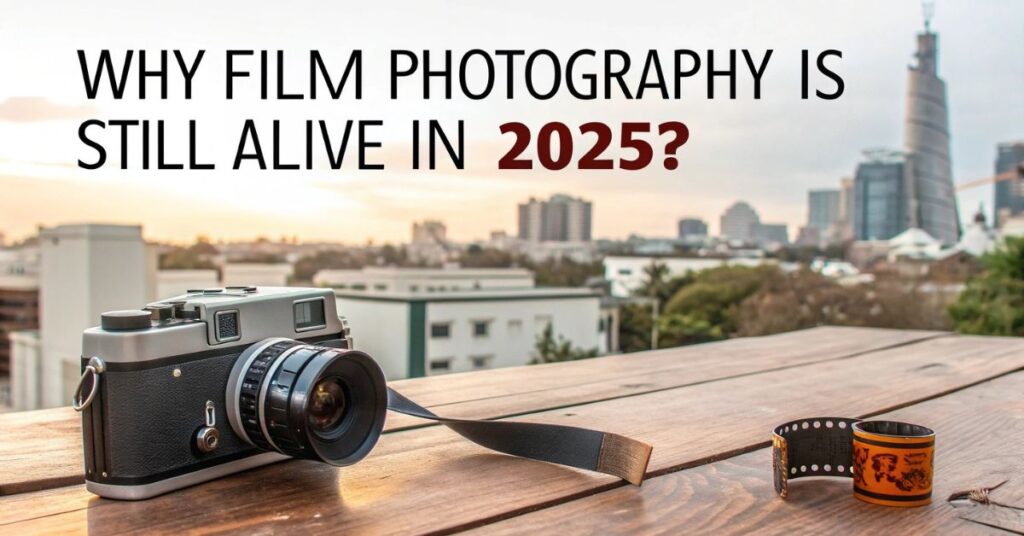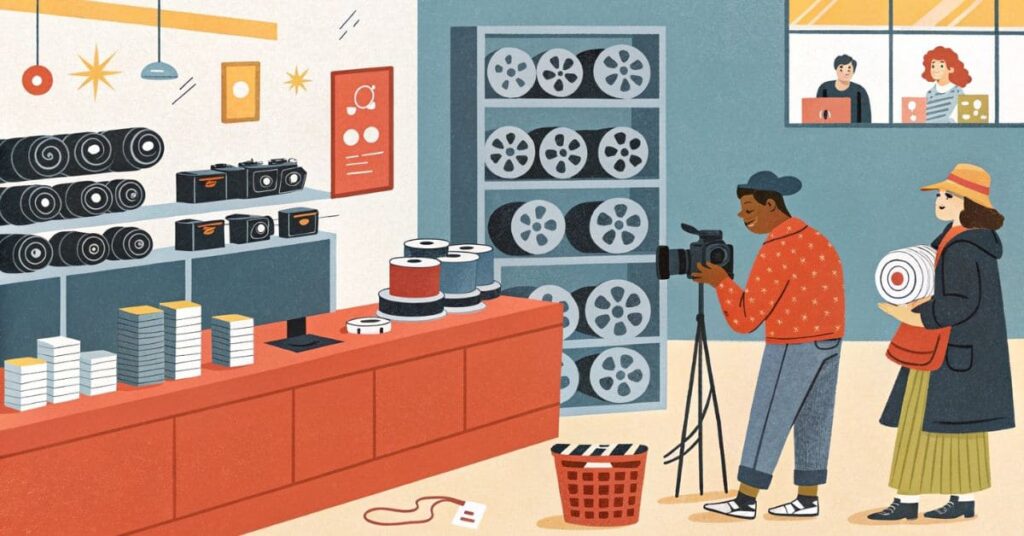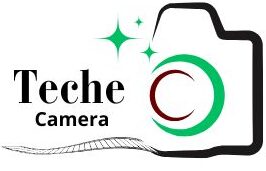I shoot film often and have tried local shops and online film labs. I like using mail-in labs like The Darkroom they scan my photos and send them back fast. It’s easy and works well for color and black and white film.
Still asking yourself, where do I get my film developed? Many places now offer film developing, both in stores and by mail. This guide will help you find the best and easiest way to develop your film.
Stay tuned with us we’ll dive into everything you need to know about where do I get my film developed, from trusted labs to helpful tips for getting the best results.
Why Film Photography Is Still Alive in 2025? – Discover Why film!
Even in today’s digital world, film photography is still going strong in 2025. But why?

1. People Love the Look of Film
Film has a soft, natural look that many digital cameras can’t match. The colors, grain, and overall feel of film photos make them special. It’s perfect for portraits, street shots, and artistic work.
2. It Feels More Real and Fun
Shooting film slows things down. You don’t take hundreds of photos you think more before pressing the shutter. That makes each photo feel more meaningful. Also, waiting to see your photos after developing adds excitement.
3. Young Creators Are Getting Into It
A lot of younger people are now discovering film cameras. They find old cameras at thrift shops or online, and enjoy learning how to use them. Apps like Instagram and TikTok have helped bring film back into style.
4. More Film Labs and Camera Shops Are Opening
Because film is popular again, more photo labs and stores are offering film services. It’s now easier than before to buy film, get it developed, and even scan it.
5. Film Cameras Are Built to Last
Many film cameras from the past still work great today. People enjoy using them because they’re simple, strong, and full of character. They don’t have screens or settings to distract you, just pure photography.
Film vs Digital Photos – Which Looks Better?
Both film and digital photos can look great—but they each have a different style. Let’s break it down simply:

1. Film Has a Classic Look
Film photos often feel warm, soft, and natural. The colors aren’t too sharp, and there’s a bit of grain that gives the photo texture. It’s great for portraits, street photos, and vintage-style shots.
2. Digital Is Sharp and Clean
Digital photos are usually very clear and detailed. You can shoot many photos fast, and they’re easy to edit later. Digital is perfect for events, fast action, and when you want full control.
3. Film Feels More Artistic
With film, you get surprises light leaks, color shifts, and little imperfections that many photographers love. It feels more emotional and artistic.
4. Digital Is Easy and Fast
Digital cameras give you instant results. You can see the photo right after you take it, edit it, and share it online in seconds. Film takes longer you have to develop it but that’s part of the fun for many people.
5. Which One Looks Better?
It depends on what you like.
- If you want a soft, vintage, timeless look, go with film.
- If you want crisp, fast, and editable photos, digital is your friend.
How to Choose the Right Film Lab? – Choose with ease!

1. Make Sure They Can Develop Your Film
Not all labs handle every type of film. Some only work with color film, while others also do black and white or slide film. Check if they support your film format, like 35mm or 120.
2. Check the Turnaround Time
Some labs are quick, giving results in just a few days. Others may take longer, especially if you’re mailing your film. Choose a lab that matches how fast you want your photos.
3. Look at the Scan Quality
Labs offer different scan sizes. Standard scans are fine for online sharing, while high-resolution scans are better if you want to print your photos. Pick what suits your use.
4. Compare Prices and What’s Included
Prices vary, and not all labs include scanning or shipping in the main price. Before sending your film, see what the total cost covers so there are no surprises.
5. Read Reviews to Know Their Reputation
Online reviews can tell you if a lab is trusted. Look for comments on image quality, film handling, and customer service to help you choose a reliable one.
Common Film Mistakes – And How to Fix Them!
Loading Mistakes
- Film not catching on the spoo
Fix: Open camera in dark, rewind slightly and reload
- Accidentally opening camera back
Fix: Immediately close it – some shots might be saved
Shooting Mistakes
- Forgetting to remove lens cap
Fix: Always check before shooting
- Shooting expired film without adjusting
Fix: Overexpose by 1 stop per 10 years expired
Lighting Problems
- Dark, underexposed photos
Fix: Use light meter or “Sunny 16” rule
- Light leaks in photos
Fix: Check camera seals – use electrical tape if needed
Development Issues
- Blank/clear film after developing
Fix: Likely not exposed – check camera operation
- Film came out completely black
Fix: Camera light leak or was opened to light
Scanning Problems
- Dusty/scratched scans
Fix: Clean negatives with air blower before scanning
- Color looks wrong in scans
Fix: Ask lab to rescan or color correct yourself
Storage Mistakes
- Film stored in heat/humidity
Fix: Keep in fridge (not freezer) until use
- Developed negatives getting scratched
Fix: Store in archival sleeves, handle by edges
Tip: When in doubt, ask at photo labs or film photography groups! Many “ruined” shots can be fixed in editing.
Where to Find Film for Your Camera? – Grab your Favorite!
Looking for film? It’s easy to find! Many camera stores sell different kinds – color, black & white, and special films. Big stores like Walmart might have some too, but not as many choices. You can also order film online from Amazon or camera websites like B&H Photo.

Want to try something different?
Check thrift stores or yard sales – sometimes you can find old film there for cheap! If you’re not sure which film to pick, ask at a camera store or join a film photography group online. They can help you choose the right film for sunny days, night photos, or cool effects. Have fun taking pictures!
Film Photography Tips for Better Pictures – Shoot with Confidence!

Camera Basics
Start by setting your camera’s ISO to match your film speed. Always advance the film carefully to avoid damage, and make sure to close the camera back completely to prevent light from ruining your shots. These simple steps will help avoid common beginner mistakes.
Lighting Advice
The best natural light for film photography comes in the early morning or late afternoon. In darker conditions, use faster film like ISO 400 or 800, or bring a small tripod. When shooting against bright backgrounds, adjust your exposure or use flash to properly expose your subject.
Choosing Film
If you’re just starting out, Kodak Gold 200 or Fuji Superia 400 are excellent, affordable color films. For black and white photography, Ilford HP5 offers that classic grainy look. When you want super vibrant colors, especially for landscapes, Fuji Velvia is a great choice.
Shooting Techniques
Get in close to capture interesting details that film renders beautifully. It’s smart to take the same shot at slightly different exposures to ensure you get it right. Always try to finish a roll of film rather than leaving it half-shot in your camera for long periods.
Camera Care
Keep your lenses clean with a soft microfiber cloth. Store your camera in a dry place, preferably with a silica gel pack to prevent moisture damage. Don’t forget to check your camera’s battery regularly, as many film cameras won’t work without power.
Creative Ideas
Many film cameras allow double exposures – exposing the same frame twice for artistic effects. Try shooting through windows or colored filters for unique looks. Film captures shadows beautifully, so look for interesting shadow patterns in your compositions.
Final Tip
Remember that film generally handles bright light better than digital. When in doubt, give your shots more light than you think they need for best results. With these simple techniques, you’ll be taking great film photos in no time.
FAQs:
Can I mail my film to get it developed?
Yes, many film labs offer mail-in services. You just send your film by post, and they scan or print your photos and send them back with digital copies.
Do drugstores still develop film?
Some drugstores like CVS and Walgreens still accept film, but they usually send it to an outside lab, so it may take longer and cost more.
Do film labs scan the photos too?
Yes, most film labs scan your photos and send you digital files. Some offer standard scans, while others give high-resolution scans for better detail.
Is developing film worth it in 2025?
Yes, many photographers still love the look and feel of film. It offers a unique style that digital can’t fully copy, which is why film is still popular today.
Where do i get my film developed online?
You can get your film developed online by sending it to trusted mail-in film labs like The Darkroom, Richard Photo Lab, or Indie Film Lab. These labs let you mail your film rolls, and they’ll scan and send your photos back digitally. Many also return your negatives by post.
Conclusion:
If you’re wondering where do I get my film developed, the good news is you have many great choices. Local camera shops and photo labs are perfect for quick and in-person service. If you prefer convenience, online film labs let you mail your film and get digital scans sent back. Whether you shoot 35mm, 120, black and white, or slide film, there’s a lab out there for you.
Always check what services they offer, how long they take, and if they return your negatives. With so many options in 2025, developing film is still simple, creative, and rewarding. Just pick the one that suits your needs and keep enjoying film photography.
Read Also:

